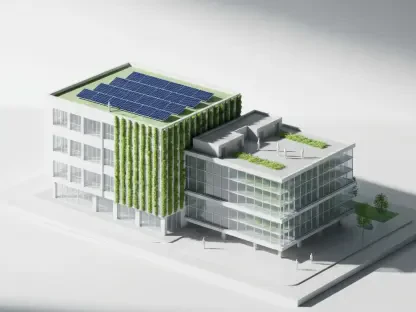In the bustling province of Malaga, the housing construction sector has seen a modest yet promising resurgence, presenting both opportunities and challenges. A notable 12% increase in residential construction approvals in the first half of 2025 compared to the same timeframe in 2024 underscores this growth. Data from Malaga’s official architects’ association confirms that 4,819 homes received the green light for construction in the initial half of the year. However, a closer inspection reveals a mixed pattern; while the overall numbers are on the rise, Malaga city experienced a decline in its planned residential projects. This drop from 1,335 homes last year to 926 this year marks a complex trend. Noteworthy is the exclusion of 530 subsidized homes, which inadvertently inflates the real growth rate to a commendable 15%. Against the backdrop of these statistics, the need for strategic planning becomes even more pronounced, especially as the Costa del Sol dominates the residential approvals, indicating regional disparities that need addressing.
Regional Disparities in Housing Approvals
The Costa del Sol’s commanding position in new housing approvals reveals a spokesperson for regional development within Malaga province. Cities like Mijas, Estepona, and Fuengirola lead the province in securing the most approvals, demonstrating vibrant construction activities that set them apart from other parts. This geographical concentration underscores a critical imbalance that highlights the need to distribute development efforts more evenly. In contrast, the inland regions, such as Antequera and Ronda, lag significantly, with negligible construction activities, thus accentuating this disparity. The disparity between coastal and inland areas points to an emerging issue, requiring thoughtful urban planning and policy-making adjustments. Addressing these imbalances can ensure that the benefits of residential development are spread throughout the province, fostering equitable growth and preventing bottlenecks in high-demand areas. Recognizing these differing development levels, stakeholders are urged to push for plans that harmonize growth across the diverse regions of Malaga.
The Return and Role of Subsidized Housing
An intriguing development in recent years is the reappearance of subsidized housing, known locally as VPOs, particularly in Marbella’s current statistics. This comes after their notable absence last year, signaling a shift influenced by recent regulatory measures promoting social housing initiatives. The resurgence of subsidized housing has significant implications for the local real estate environment, providing much-needed options for affordability. By reintroducing VPOs, authorities are responding proactively to demands for affordable public housing, catering to a segment of society that significantly benefits from government-backed homeownership opportunities. This move not only alleviates pressure on soaring house prices but also aligns with broader strategies aimed at creating inclusive urban communities. The success of these initiatives demands robust support, ensuring they remain a permanent fixture rather than a temporary solution. With continued emphasis on subsidized housing, Malaga can address affordability concerns while fostering a sustainable residential development landscape.
Strategic Planning and Urban Development
Given the dynamic trends in Malaga’s housing market, the focus on strategic planning and urban development emerges as a necessity. The imbalance between supply and demand remains a persistent challenge, with housing shortages impacting the quality of life. To navigate these challenges efficiently, urban planning must evolve to accommodate both regional and demographic demands. Adequate infrastructure, balanced development, and sustainable practices are essential to mitigate potential real estate saturation, particularly in high-demand regions like the Costa del Sol. The call from Susana Gómez de Lara, dean of Malaga’s architects, emphasizes the need for bold systematic changes and future-forward planning. Her insights reflect a consensus view that embraces strategic development, advocating for policy adaptations that align with the current and projected needs of the population. Thus, prioritizing sustainable community growth is crucial for ensuring long-term viability. By fostering a well-rounded approach, Malaga can effectively sustain its growth trajectory in the housing sector while improving residents’ quality of life.
Embracing Change for a Balanced Future
In the vibrant province of Malaga, the housing construction sector is witnessing a steady yet hopeful recovery, which brings both prospects and hurdles. From the first half of 2024 to the same period in 2025, there was a notable 12% rise in residential construction approvals. This growth momentum is supported by data from the official architects’ association in Malaga, which reveals that 4,819 homes secured construction approval in the first six months of the year. Delving deeper, however, unveils a mixed bag; overall numbers are climbing, yet Malaga city shows a downturn in planned residential projects. Residential projects fell from 1,335 homes last year to 926 this year, presenting a nuanced trend. Notably, the exclusion of 530 subsidized homes means the actual growth is an impressive 15%. Amid these figures, strategic planning becomes vital, especially with the Costa del Sol dominating residential approvals, highlighting regional imbalances that demand attention and potential bridging to ensure equitable development.









